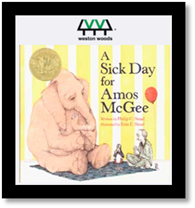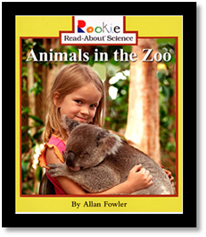Scientific: Problem and Solution
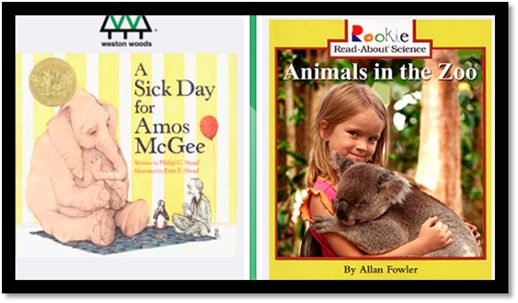
Figure 1 BookFlix
Unit Overview
This unit focuses on Problem and Solution Text
Structure and Problem
and Solution Writing.
You will
be able to accomplish the following objectives by the end of this unit:
1.
I can use spelling patterns and rules to help me spell new
words. L.3.2.F
2.
I can ask and answer questions to show that I understand the
information that I am reading. RI.3.1
3.
I can find the answers to specific questions within
informational text that I read. RI.3.1
4.
I can show what I have learned from informational text and
illustrations by answering questions about where, when, why, and how. RI.3.7
5.
I can read and understand 3rd grade informational texts by
myself. RI.3.10
6.
I can write to inform and explain ideas to others clearly.W.3.2
7.
I can write an informative text that introduces my topic and
then groups related information together. W.3.2.A
8.
I can write about a topic using facts, definitions, and details.
W.3.2.B
9.
I can use linking words (also, another, and, more, but, etc.) to
connect the ideas in my writing. W.3.2.C
10.
I can write conclusions (endings) to my informative pieces of
writing. W.3.2.D
11.
I can include illustrations in my writing to help others
understand my topic better. W.3.2.A
12.
I can write for short time frames or over a longer period of
time, depending on my purpose, audience, and topic. W.3.10
Spelling List
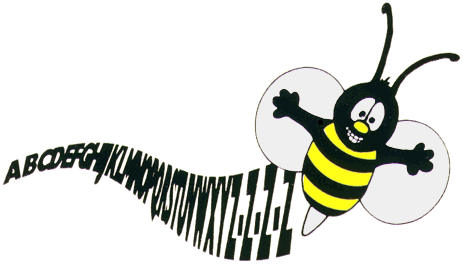
|
follow |
ground |
group |
|
below |
around |
would |
|
own |
found |
should |
|
grown |
about |
country |
|
town |
house |
cousin |
Let's Practice
Click on Spelling Training to practice your spelling words. Add
each of your spelling words to the list.
Then, complete one of the activities below the list.
Vocabulary
List
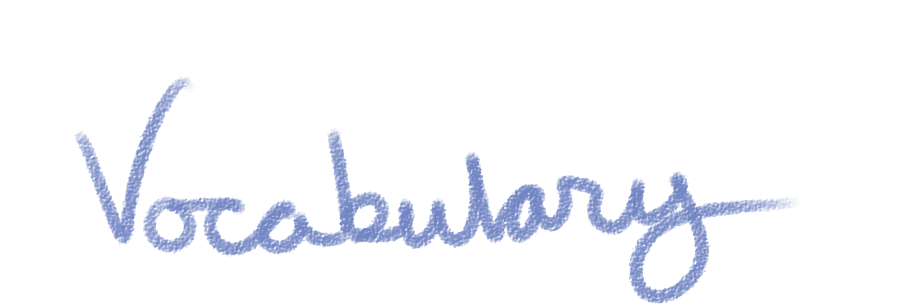
|
allergy |
A
response by the body to food or something in the air |
|
amble |
To walk in a relaxed way |
|
chess |
A game
that is played on a checkerboard with black and white pieces |
|
concern |
To worry |
|
handkerchief |
A cloth
tissue |
|
tortoise |
A large land reptile
that looks like a turtle |
Above is your list of vocabulary words with their definitions. Be
sure to study and practice these words daily before you begin your reading
lessons.
Let's
Practice
Below is a Quizlet activity on your vocabulary
words for the unit. You should practice
the Flashcard and Learn activities each day during the week of this unit.
Problem and
Solution
Let’s review the five informational text
structures in this course. Watch the video below.
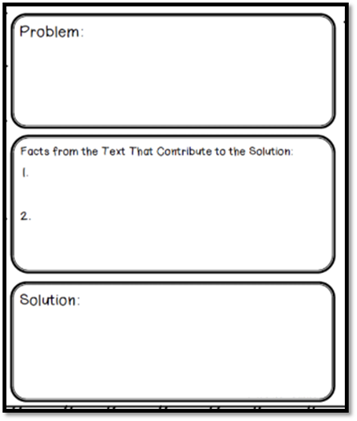
Scientific nonfiction provides true information
about a science topic. This information might be in an article in a magazine,
newspaper, textbook, encyclopedia, website, or picture book. People might read
scientific nonfiction for research or just because they are interested in the
topic.
In this unit, we will focus on identifying the problem
and solution of a scientific nonfiction text.
The purpose of a problem and solution text
structure is to identify the problem and show a solution to that problem.
Writers often use signal words to
introduce problems and solutions.
|
because |
one part of |
solve |
should |
|
this led to |
concern |
problem |
solution |
Read the text below. Then, identify the problem and
solution.
|
Having a
cold is no fun. Coughing makes it hard to fall asleep. A sore throat is
painful. Try some tea with honey in it. The honey will soothe your throat.
There may be no cure for the common cold. You can treat the symptoms, though. |
Click here to view the problem and solution.
Let's Practice
IXL Skill Check – Click Match problems with their solutions to complete the skill.
Reading Log & Journal
Writing journals can be
compelling to you as a student. It helps you respond to your
Read-Aloud and Oral Readings to gain further understanding. You must
write at least one journal per unit in this course based on one of your readings. Click
on the Unit Resource icon to the left of your screen to
download the Reading Log & Journal template. Also,
you have an option to create your journal book for this course.
Reading
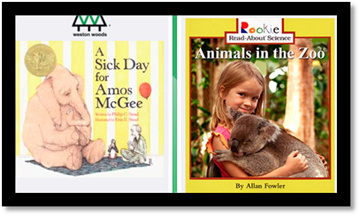
The above two stories will be used for your
Read-Aloud and Oral Reading activities. One
of the texts is fiction, and the other is nonfiction.
Read-Aloud
Your read-aloud is a fiction story called A
Sick Day for Amos McGee. This story falls under the fantasy genre. Fantasy books tell stories that are not true and could
not ever be true. They may include imaginary worlds, fantastic creatures, or
ordinary people and animals who can do extraordinary things. You can often tell
a book is a fantasy story by looking closely at the setting and the characters.
“Ah-choo!”
Oh no! Amos McGee, the friendly zookeeper, woke up feeling sick. Instead of his
predictable morning routine of getting up early, having tea and oatmeal for
breakfast, and riding the bus to the zoo, he will be staying home in bed. When
kind and caring Amos does not arrive at the zoo, his animal friends become
concerned. Not knowing what else to do, the animals develop a plan to find Amos
and cheer him up. Amos and the zoo animals are a testament to the importance of
kindness and true friendship.
Before
reading, think about the questions below:
·
Have you ever had a problem
with a friend? What was the problem? How did you and your friend solve the
problem?
·
Describe a time when you
were sick. Who helped you? Did you like having someone help you when you were
sick?
Click the image below to begin your read-aloud
activity.
Did
you hear the new vocabulary words? Did it help you to know what those words
meant before you watched the video?
What
problem did the animals have? How did they solve it?
Let's Practice
Oral Reading
Your oral reading is a nonfiction text called Animals
in the Zoo. This text introduces readers to the different types of
animals at the zoo and how the zoo and zookeepers provide for them.
You just finished reading (or listening to) a
fiction story. Remember, fiction talks about imaginary things, or make-believe,
while nonfiction talks about things in real life. You will be reading (or
listening to) a nonfiction book about animals that live in the zoo. A
nonfiction book contains facts about a subject. As you read this book, please
pay attention to the different types of animals and how the zoo cares for them.
Click the image below to begin your oral
reading activity.
Let's Practice
Grammar
Review
|
Part of Speech |
Description |
Example |
|
Noun |
a person, place, thing,
or an idea |
Mark
is very tall. |
|
Proper Noun |
a
specific person, place, or thing; always capitalized |
Columbus - Spiderman |
|
Common Noun |
a general
person, place, or thing; not
capitalized |
city - superhero |
|
Pronoun |
a word
that takes the place of a noun |
He is
very tall |
|
Verb |
a word
that shows action or state of being |
She saw him there. |
|
Action Verb |
a word
that shows action; it tells what someone or something is doing |
Reggie walked to the store. |
|
Linking Verbs |
a word
that shows a state of being rather than action |
The birds are on the roof. |
|
Adjective |
a word that describes a
noun |
The flowers are pretty. |
|
Adverbs |
a word that
describes a verb or an adjective |
Tom ran quickly. |
Let's Practice
Informative
Writing
Below is your video and activity from
the Informational Writing for Kids series provided by Teaching
Without Frills.
In Episode 8, you will start Making a Glossary.
Click here to complete an activity
based on the video above.
Problem
and Solution
Scientific nonfiction provides true information
about a science topic. This information may be in an article in a magazine,
newspaper, textbook, encyclopedia, website, or picture book. People might read
scientific nonfiction for research or just because they are interested in the
topic.
In this unit, we focused on identifying the problem
and solution of a scientific nonfiction text.
Let's
Practice
Please read and listen to the Problem and
Solution writing
sample below.
As your read and listen, identify the following
items:
- Topic
– Details
- Problem
- Solution
|
Water Pollution Pollution
has existed for as long as humans have been on Earth. Pollution has gotten
worse over time. It has become a huge problem for animals, humans, and the
land. What is Pollution? Pollution
is when chemicals harm nature. Pollutants make the water and air dirty and
unsafe. Humans can
breathe because the air is made up of nitrogen, oxygen, and water vapor.
Anything else in the air is pollution. Greenhouse
gases or other dangerous gases can cause it. Burning fuels makes soot that
also creates pollution. Factories and cars make a lot of this pollution.
Humans breathe these pollutants every day. Millions of people die or get sick
each year. They get asthma, heart disease, and other breathing illnesses. The Clean
Air Act was passed in the U.S. in 1970. It tried to stop pollution. The act
forbids certain pollutants from entering the air, but these laws cannot undo
the damage that been done. What Can Be Done? Pollution
cannot be wished away. We need to change the way we live. We need to make
less waste. We must reuse and recycle things. We need to use fewer chemicals.
Businesses, governments, and organizations need to work together. They must
teach people how to protect the air and water. |
IXL Skill Check – Click Match problems with their solutions to complete the skill.
IXL Skill Check – Click Read passages about animals to complete the skill.
IXL Skill Check – Click Read passages about science and
nature to complete the skill.
Cursive Handwriting
Stories offer great opportunities to visualize. However, did you know that individual letters can do the same thing? For instance, please take a look at the following printed letter g.
Because
it is printed, it is basically a circle with a straight line and gentle curve.
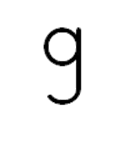
Now, close your eyes and try to visualize what a lowercase, cursive “g” would look like.
Hint: It is probably curvier and more flowing than the printed “g”. It definitely has a downcurve beginning.
Next, open your eyes and take a look at the cursive, lowercase letter “g”:
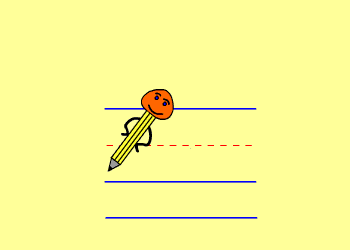
Now you are going to practice writing the cursive, lowercase “g” and joining it to other letters. Pay close attention to the overcurve to downcurve joining. Click on the Unit Resource icon to the left of your screen to practice the lowercase “g”.
Let’s
move on to another letter. How about the
letter “o”? Take a look at the
following printed letter “o”.
O
Because it is printed, it is basically a circle.
Now, close your eyes and try to visualize what a lowercase, cursive letter o would look like. Hint: It is probably a little curvier and more flowing than the printed letter “o”. It definitely has a downcurve beginning.
Next,
open your eyes and take a look at the cursive, lowercase letter “o”:
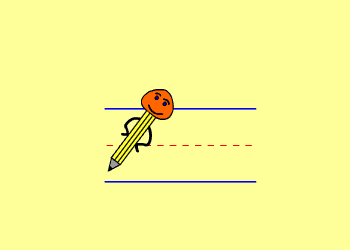
Now you are going to practice writing the cursive,
lowercase o and join it to other letters. Pay close attention to the checkstroke to
downcurve joinings. Click on the Unit
Resource icon to the left of your screen to practice the lowercase “o”.
